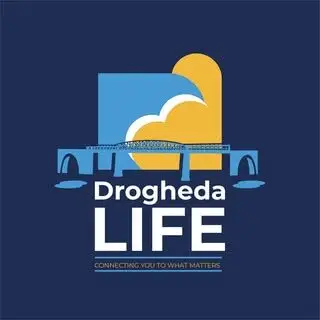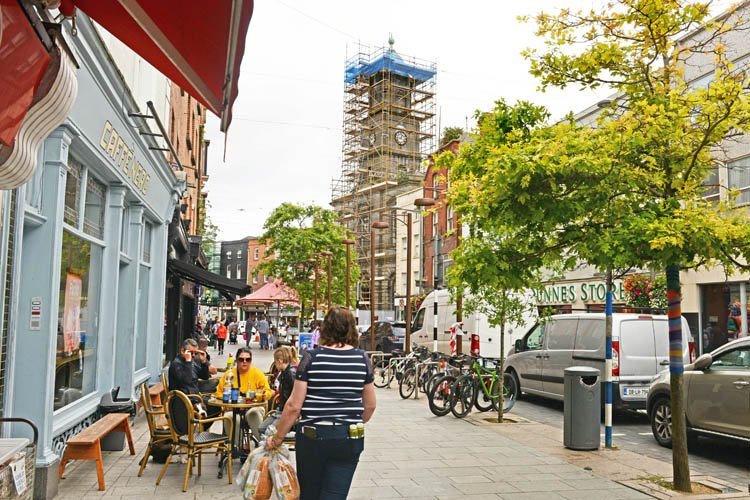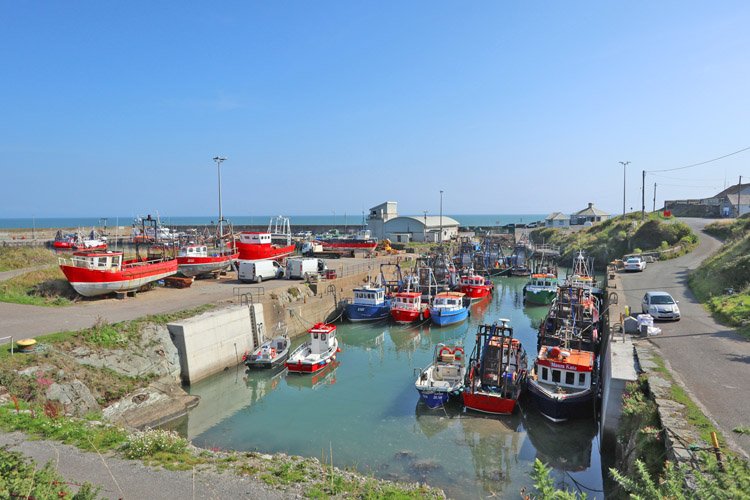By Sean Collins
The most looked-up to building in Drogheda is of course the Tholsel which is currently udergoing renovation work. Ever since 1770, locals have looked up to check the time on the old town clock. It is part and parcel of daily life in Drogheda but most people don’t know much about its history.
Stories abound about public hangings at the Tholsel and last week in my article Drogheda’s proud handballing tradition stretching back over the centuries I referred to the hanging in 1798 of Michael Boylan but they were few and far between.
A Tholsel, sometimes referred to as a Guildhall, was a building used to collect tolls and taxes and to administer trade and other documents in Irish towns and cities.
The first mention of a Tholsel in Drogheda was made in 1381 by medievalist John Bradley who noted that the building was on the north-west end of Booth Street (Shop Street), and had two large cellars underneath.
The current Drogheda Tholsel was erected in 1770 and was the centre of municipal authority for over 130 years. Although it is currently covered in scaffolding, you can be sure that Droghedeans everywhere welcome the care and maintenance of this most famous of Drogheda landmarks.
Towards the end of the 18th century the term Tholsel was often swapped for “Market House” with many of the administrative functions of the original Tholsel transferring to another dedicated local council or government building such as a court or sessions house. The name Tholsel in Drogheda has remained in use among the town’s people.
In the County Louth Archaeological Journal of 1971, local historian Jim Garry presented a comprehensive study of the development of the Tholsel. He first observed, “Ravell’s map of Drogheda in 1749 shows the front elevation of the principal buildings in the town at that time. All were stone-built, except the old Tholsel, “a low building with a high front and clock-tower and built of wood.”
According to the “Council Book of the Drogheda Corporation” for the latter part of the seventeenth and the early eighteenth centuries, it was becoming increasingly difficult and expensive to carry out constant repairs to the (wooden) building.

Jim highlighted a series of extracts from the minutes of Drogheda Corporation, transcribed and published by Thomas Gogarty. The excerpts explained as follows:
At an Assembly held on I4th January, 1763 it was ” Ordered that the Mayor and Sheriffs shall think proper to call to their assistance, he and they are hereby appointed a committee to cause the Mayoralty House on the Quay to be forthwith finished and fitted up for the reception of this Corporation, as a Town House or Court House for holding the Assembly sessions, Assizises and other Courts within this Town and County, the Tholsel being at present in a very ruinous state.
The following year at an Assembly held on I2th October 1764 draw and sign orders on the Treasurer for any money that shall be wanted for pulling down the old Tholsel, which is to be allowed in his account, and as soon as they have fixed upon a Plan of a new Tholsel, Mr. Mavor is hereby required to call a special Assembly to consider and approve thereof.”
Two plans for a new Tholsel building were laid before the Assembly on 8th August, 1765, ” It was ordered that “the two plans by Mr. Hamilton Bury and Mr. George Darley be forthwith transmitted by the Treasurer of this Corporation, to Mr. Myers, an eminent Architect, now in this Kingdom, for his opinion, which of said two plans is the most eligible and proper; and the Treasurer is hereby impowered to pay Mr. Myers such a gratuity for his trouble as he shall think sufficient. Mr. Mvers opinion to be decisive and that whichever of said Plans he shall approve of, the same shall be erected and carried into execution forthwith.
23rd August, 1765, we read: ” Mr. Christopher Myers, Architect, approves and recommends the Plan and Elevation of a Tholsel made by Mr. George Darley. Mason and workmen to begin the building so as to have the foundations laid and as much of the work of the underground story done this season as is possible. Mr. Hamilton Bury was to act as overseer and he was to publish an advertisement for persons willing to undertake and complete the building. In January, 1766 the estimated cost was placed before the Corporation, and Auditors and Viewers were appointed to inspect the work ” and to take care the same be properly and well executed.” The costs of pulling down the old Thosel 150 pounds
‘January 1765; Ordered that a committee be formed to have the old Tholsel pulled down immediately and to consider a proper plan of a new Tholsel to be built and they are hereby empowered to sell and dispose of such of the old materials as they shall think proper for the benefit of this corporation and also to draw and sign orders on the treasurer for any money that shall be wanted for pulling down the old Tholsel and that the Mayor is hereby required to call a special assembly to consider and approve thereof.
‘April 1765; A report from the auditors, viewers and the committee appointed by the grand assembly on January 18th last for the pulling down of the old Tholsel and to consider a proper consideration for the tenants interests to the cellars and standings under the same. We find that Alderman Francis Leigh has a lease of the butchers standing and a small shop under the old Tholsel, dated 17th March 1740, for 61 years at the yearly rent of £2.

‘August 1765; Ordered that the two plans of a new Tholsel now laid before this assembly by Mr Hamilton Bury and Mr George Darley be forthwith transmitted by the treasurer to Mr Myers, an eminent architect new in this Kingdom, for his opinion as of which of the two plans is the most eligible and proper.
‘August 23rd1765; At a special assembly meeting, Mr Myers told the corporation that he approves of and recommends the plan and elevation of a Tholsel made by Mr Darley as a proper design for this corporation to follow and carry into erection with such alterations as they shall think necessary and that the Mayor is hereby empowered to employ means and workmen to begin the said building and to have the foundations laid and so much of the work of the underground storey done this season as is possible.
‘January 1766; Ordered that the estimates laid before this assembly by Mr George Darley of the city of Dublin, Architect for building and finishing a Tholsel be accepted and agreed and that the treasurer is hereby empowered to borrow £500 with interest for the building of the said Tholsel.’
£500 was subsequently borrowed from Alderman Edward Chesshire the younger, along with a further borrowing of £350 in October 1767 from Mrs. Barlow, while in January 1768 a further £800 was borrowed yet again from Alderman Cheshire while in April of that same year another £300 was borrowed by the corporation for the completion of the said Tholsel.
At a meeting of the corporation in April 1770 George Darley informed the assembly that he had been a ‘considerable loser’, in financial terms, regarding the building of the Tholsel.
In July 1770, it was ordered that a new clock be erected on the steeple of the new Tholsel and finally in October 1770, it was recorded that ‘the said George Darley be paid the sum of £305.8s.4d, being the balance remaining to him for the work done at the Tholsel exclusive of his original estimate and contract for that building’.
Throughout the centuries the Tholsel has always been the centre-point of Drogheda. Nearly all historical events in the town’s history have happened under it’s shadow. Wally Murphy our noted local balladeer deserves the last word as he celebrated the Tholsel in song.

“Under the Clock”
There’s a place down in Drogheda, the Tholsel it’s called
Where the boys all stand with their backs to the walls,
They come down from the Labour and they gather to talk
But you won’t get no news standing under the clock
Fol-the-diddle- ring – o- the day- the day [repeat]
I went walking down Shop St with the half of a crown
And I went into Daly’s the cheapest in town
But the pints had gone up and it gave me a shock and
You won’t get your pint standing under the clock
Fol…………
Now the colleens of Drogheda are fair just the same
But they won’t let you near them to ruin their good name
You can buy them a diamond by going into hock
But you won’t get your………… Standing under the clock.
Fol…………..
Now I have been ’round the world and I’m going again
And when I find that rainbow with gold at the end
I will come back to Drogheda with gold in great stock
And I will end up my days sleeping under the clock.




